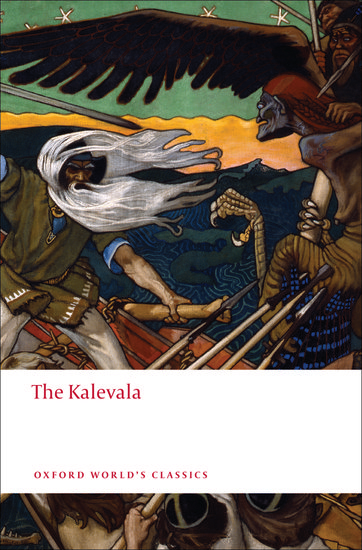By Keith Bosley
In the original final Finnish version of the Kalevala, published in 1849 (17: 523 – 526):
Ei sanat salahan joua
eikä luottehet lovehen;
mahti ei joua maan rakohon,
vaikka mahtajat menevät.
Before we translate, certain features can be pointed out: a line has eight syllables; stress always falls on the first syllable of a word; every line has alliteration. Soon after the Kalevala came out in its final version, the Baltic German linguist Franz Anton Schiefner (1817 – 1879) published the first German translation in 1852. He ironed out the metre into a trochaic tetrameter, and disregarded the alliteration. Later German translations have followed his example. Hans and Lore Fromm’s 1967 edition (from Finnish) also recast the text into pairs of lines:
Worte werden nicht verborgen, Sprüche fallen nicht in Spalten,
Zauber stürzt nicht in die Erdschlucht, wenn auch Zauberwisser gehen.

Till no spells are hidden from me,
Nor the spells of magic hidden,
That in caves their power is lost not,
Even though the wizards perish.
The original Kalevala metre remains a mystery — see the opening quotation. Many Finns and translators into a variety of languages make matters worse by following Schiefner. The present English translator has learnt from his native tradition, begun by Henry Howard, Earl of Surrey’s (1516/17 – 1547) sixteenth-century versions of Virgil, by avoiding original metres. Thousands of lines before tackling the Kalevala, I developed a syllabic line of seven — sometimes five, less often nine — owing something to medieval Welsh. This has enabled me, in my Oxford World’s Classics edition, to translate almost literally:
The Kalevala’s influence lies not only in Finnish history — such as its essential role in fostering a distinct sense of national cultural identity that resulted in its independence in 1917 following the Russian Revolution — but elsewhere too. One of the more famous examples may be found in J.R.R. Tolkien, who credited several aspects of the Finnish epic and the language as part of the inspiration behind The Lord of the Rings. Väinämöinen, the wise old sage, was a source of inspiration for the character of Gandalf, and Tolkien was rapt with excitement upon discovering a Finnish Grammar, as he noted in a letter to W.H. Auden, also one-time professor at the University of Oxford:
It was like discovering a complete wine-cellar filled with bottles of an amazing wine of a kind and flavour never tasted before. It quite intoxicated me; and I gave up the attempt to invent an ‘unrecorded’ Germanic language, and my ‘own language’ – or series of invented languages – became heavily Finnicized [sic] in phonetic pattern and structure.
The Kalevala remains a source of only semi-discovered beauty and incredible imagination. Have you ever been challenged to tie an egg into invisible knots? (You may use magic.)
Keith Bosley has published several collections of poems and a number of translation, mainly from French, Portuguese, German, and Finnish. In 1991 he was made a Knight, First Class, of the Order of the White Rose of Finland. An audio book of his edition of the Kalevala was published by Naxos this month. The cover art for the audio book is by Ben Bosley.
For over 100 years Oxford World’s Classics has made available the broadest spectrum of literature from around the globe. Each affordable volume reflects Oxford’s commitment to scholarship, providing the most accurate text plus a wealth of other valuable features, including expert introductions by leading authorities, voluminous notes to clarify the text, up-to-date bibliographies for further study, and much more. You can follow Oxford World’s Classics on Twitter and Facebook.
Subscribe to the OUPblog via email or RSS.
Subscribe to only literature articles on the OUPblog via email or RSS.
Image credit: Elias Lönnrot and Kalevala heroes on the monument by Emil Wikström in Helsinki. Photo by Дар Ветер [CC-BY-SA-3.0], via Wikimedia Commons



Recent Comments
There are currently no comments.